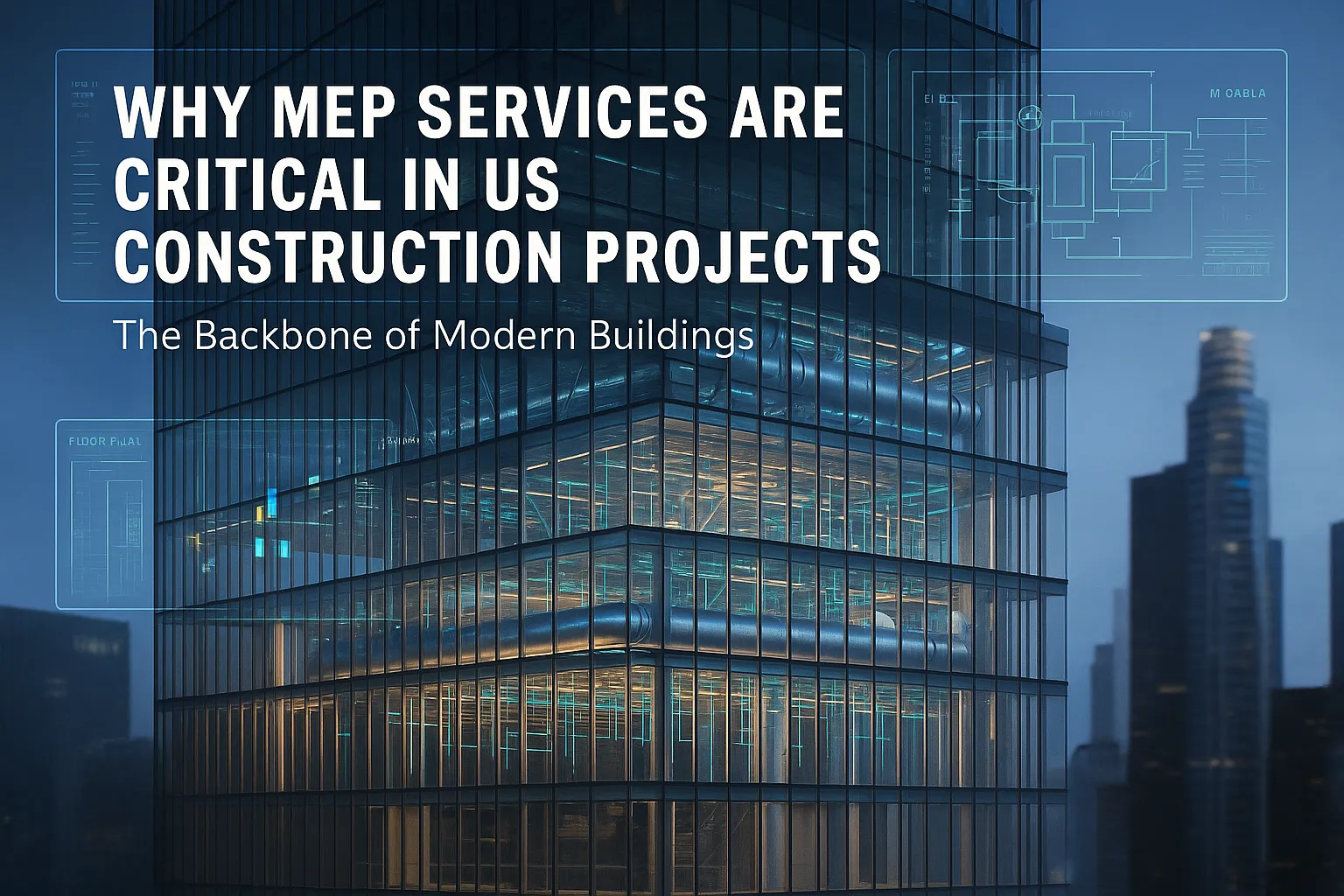In today’s fast-paced construction industry, the success of a building project depends not only on its architectural design and structural stability but also on the seamless integration of Mechanical, Electrical, and Plumbing (MEP) systems. From energy efficiency and safety compliance to comfort and sustainability, MEP services play a vital role in ensuring that buildings function as intended.
In the US construction market, where regulatory compliance, tight deadlines, and cost control are paramount, MEP services are no longer optional—they are essential for project success.
What Are MEP Services?
MEP services encompass the planning, design, and execution of three critical systems in any building:
- Mechanical (HVAC systems): Heating, ventilation, and air conditioning for indoor air quality and comfort.
- Electrical: Power distribution, lighting, fire alarms, and communication systems.
- Plumbing: Water supply, drainage, gas piping, and waste management.
Together, these systems form the backbone of a building’s functionality.
Why MEP is the Backbone of Modern Buildings
- Operational Efficiency: Properly designed MEP systems reduce energy consumption and operational costs.
- Safety & Compliance: Electrical and plumbing safety codes in the US require accurate planning and professional execution.
- Comfort & Usability: From climate control to clean water, MEP systems define user experience in residential, commercial, and industrial buildings.
- Future-Readiness: Smart buildings and IoT integration rely heavily on advanced MEP coordination.
Impact on Cost, Timelines, and Safety
Construction projects in the US are often plagued by cost overruns and delays. According to McKinsey Global Institute, construction projects exceed their budgets by up to 80% and timelines by 20% on average. Many of these issues stem from poor MEP planning.
- Cost Savings: Early MEP integration reduces rework and avoids expensive clashes.
- Faster Delivery: Coordinated MEP systems streamline installation and inspections.
- Enhanced Safety: Proper electrical and plumbing systems reduce fire hazards, leaks, and compliance risks.
Stat: Projects with BIM-based MEP coordination see up to 33% fewer errors and rework compared to traditional methods.
Role of BIM & Technology in MEP Coordination
Clash Detection
BIM helps identify system conflicts early, saving costs and delays. Example: In a Chicago hospital project, BIM detected 700+ clashes, saving $500,000 in rework.
3D Visualization
BIM provides a 3D model with integrated MEP systems, reducing mistakes. Example: A New York tower project used BIM for training, cutting installation time by 15%.
Data Accuracy
BIM updates designs in real time, minimizing human error. Example: A Texas office project avoided miscommunication during last-minute HVAC changes.
Sustainability
BIM supports energy modeling. Example: A California university reduced energy use by 25% and achieved LEED Gold certification.
Compliance with US Codes & Standards
- NEC (National Electrical Code)
- ASHRAE Standards
- NFPA Codes
- IPC (International Plumbing Code)
Case Studies & Real-World Examples
- Texas hospital: 15% cost savings, 25% less rework with BIM.
- New York high-rise: Outsourced MEP reduced delays by 20% and saved $200k annually in energy.
- California factory: Integrated BIM reduced water use by 30% and achieved LEED certification.
Sustainability & Energy Efficiency
- Smart HVAC: up to 30% less energy use
- Energy-efficient lighting: reduced costs
- Water-saving plumbing: lower utility bills
LEED-certified buildings achieve 25% lower energy use and 11% lower water use compared to conventional ones.
Common Challenges in MEP & How to Overcome Them
.webp)
Clashes in Design
Solution: BIM-based coordination meetings. Example: Dallas project avoided costly redesigns.
Budget Overruns
Solution: Involve MEP experts early. Example: Boston hospital reduced overruns by 12%.
Skilled Labor Shortages
Solution: Outsource drafting/design. Example: Florida contractor met deadlines via outsourcing.
Changing Regulations
Solution: Work with consultants familiar with codes. Example: California school avoided inspection delays.
Key Takeaways
- MEP services are critical for safety, efficiency, and compliance.
- Poor planning leads to overruns, delays, and hazards.
- BIM enables clash detection, 3D visualization, real-time updates, and sustainable design.
- Sustainability is essential for green building certifications.
Conclusion
As US construction projects grow complex, MEP services are more critical than ever. Architects, contractors, and developers benefit from professional MEP solutions that reduce risks, control costs, and deliver high-performing buildings.
Partner with BuiltInBIM for MEP Services
At BuiltInBIM, we provide end-to-end MEP services—from design and drafting to BIM-based coordination—helping clients deliver projects on time and within budget.





